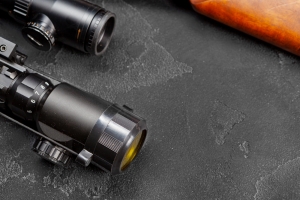In the competitive landscape of the fish processing industry, businesses continually seek cost-effective solutions to maintain profitability without compromising operational efficiency. One emerging trend is the adoption of restored fish processing equipment - a practice that not only offers significant financial benefits but also aligns with sustainable business practices.
Economic Advantages
Investing in new fish processing machinery can be a substantial financial burden, especially for small to medium-sized enterprises (SMEs). The global fish processing equipment market was valued at approximately USD 2.37 million in 2023 and is projected to reach USD 2.99 million by 2030, growing at a CAGR of 3.2% during the forecast period. This upward trend indicates a continuous demand for such equipment, which often comes with high costs.
Restored equipment presents a viable alternative, offering substantial cost savings while delivering comparable performance to new machinery. Companies like Norway-based Normar Trading AS specialize in procuring, refurbishing, and reselling top-quality machines from renowned brands such as Baader, Marel, KM Fish Machinery, Fomaco, and Multivac.
By opting for refurbished equipment, businesses can allocate capital more efficiently, investing in other critical areas such as workforce development or market expansion.
Types of Fish Processing Machines
Fish processing involves a range of specialized machines, each designed for specific tasks. Understanding these machines can help businesses make informed decisions when investing in restored equipment.
- Filleting Machines. Designed to efficiently remove fillets from fish while minimizing waste. Machines like the BAADER 582 and Marel MS 2730 are highly sought-after for their precision and adaptability to different fish species and sizes.
- Skinning Machines. These machines remove the skin from fish fillets without damaging the meat. Products like the Cretel 460 series are known for their gentle handling and high throughput, making them ideal for delicate species.
- Gut Cleaning Machines. Automated gutting machines, such as the BAADER 101, ensure hygienic and precise removal of internal organs, increasing the shelf life and quality of the fish.
- Freezing and Cooling Systems. Essential for maintaining freshness, freezing systems like those from Cabinplant incorporate energy-efficient technologies that reduce costs while preserving product quality.
- Packaging Machines. Equipment like Multivac's packaging lines provides vacuum and modified atmosphere packaging solutions, extending the shelf life of seafood products while maintaining their appearance and taste.
- Sorting and Grading Systems. Advanced sorting machines, such as Martak's systems, use sensors to categorize fish by size and quality, ensuring consistency and maximizing yield.
By integrating restored versions of these machines, businesses can achieve high efficiency at a fraction of the cost of new equipment.
Environmental Impact
The environmental implications of equipment disposal are a growing concern within the industry. Discarded machinery contributes to waste and environmental degradation, counteracting global sustainability efforts. Restoring and reusing equipment mitigates these issues by extending the lifecycle of machinery, reducing the need for new manufacturing, and minimizing waste. This practice supports a circular economy, emphasizing resource efficiency and environmental responsibility.
Quality and Reliability
A common misconception is that restored equipment may lack the reliability or efficiency of new machines. However, companies like Normar Trading AS ensure that refurbished machinery undergoes rigorous testing and quality assurance processes. Each piece of equipment is meticulously overhauled to meet industry standards, providing clients with dependable solutions tailored to their specific operational needs.
Comprehensive Support Services
Beyond the initial purchase, the availability of post-sale support and maintenance services is crucial. Providers of restored equipment often offer comprehensive after-sales services, including routine maintenance, complex overhauls, and upgrades. This ensures that the equipment operates smoothly and efficiently, optimizing production and contributing to business success.
Industry Adoption and Future Outlook
The increasing acceptance of restored equipment reflects a broader shift towards sustainable and economically prudent business practices within the fish processing industry. As the market for fish processing equipment continues to grow, with projections reaching USD 2.99 million by 2030, the role of refurbished machinery is set to become more prominent. Businesses that embrace this approach not only benefit financially but also contribute positively to environmental sustainability, positioning themselves as responsible and forward-thinking players in the industry.






